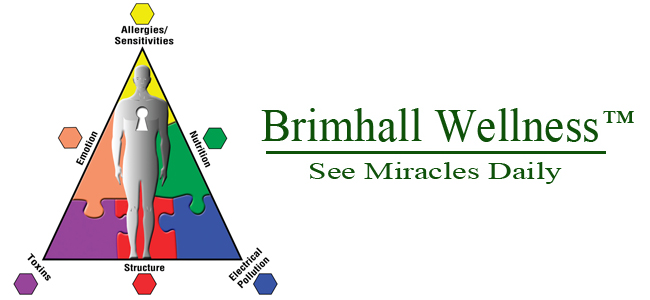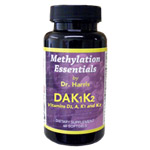
Protect Your Lungs from the “Big 5” Respiratory Illnesses
February 10, 2020 Puzzle Piece
Your
lungs are in constant STRESS whether you know it or not, which means
they constantly work to detox and stay healthy. With every breath, we
either help or harm ourselves.
Easily, half a billion people around the world are affected by one type
of respiratory illness or another. The most widespread affliction is
asthma. According to the World Health Organization (WHO), the “Big Five”
worldwide are:
- COPD
- Asthma
- Acute Lower Respiratory Tract Infections
- TB
- Lung Cancer
Statistics show that the global figures are staggering:
- Pneumonia kills millions of people each year, making it a leading cause of death in the very young and very old.
- 1.76 million people die from lung cancer each year, making it the deadliest cancer.
- 10
million people develop tuberculosis and 1.6 million die from it each
year, making it the most common lethal infectious disease.
- 200
million are affected by chronic obstructive pulmonary disease (COPD),
65 million severely, and 3 million die from it each year, making it the
third leading cause of death worldwide.
- 334 million people suffer from asthma, making it the most common chronic disease of childhood. The numbers rise every year.
On top of the Big Five are a trio of respiratory disorders that affect
hundreds of millions worldwide: sleep-disordered breathing (over 100
million), pulmonary hypertension (millions), and occupational lung
diseases (over 50 million).
The WHO stated, “Respiratory diseases account for more than 10% of all
disability-adjusted life-years (DALYs), a metric that estimates the
amount of active and productive life lost due to a condition.
Respiratory diseases are second only to cardiovascular diseases
(including stroke).” So, what are YOU DOING to prevent and heal this
damaged organ?
COPD is generally self-inflicted by smoking because of
its destructive effects on lung tissue and the gradual buildup of
obstructions in the airways, along with chronic inflammation. For
non-smokers, it’s brought on by occupational dust, genetic syndromes,
childhood pneumonia and other infections and diseases that involve the
airways.
Asthma incidences have been on the rise since the
1990s--thirty years of worsening. It causes about 489,000 deaths per
year or more than 1,300 deaths per day. The WHO noted that, “Recent
evidence indicates that children with asthma may have abnormal lung
growth and are at risk for developing lifelong respiratory compromise
and COPD.”
Genetic predisposition appears to be a leading factor to developing
asthma, followed by environmental allergens and air pollution.
Lower respiratory tract infections and pneumonia are
two of the leading causes of death, accounting for more than 4 million
fatalities annually. Streptococcus pneumoniae remains the most frequent
bacterial cause of pneumonia. Pneumonia can also lead to chronic
respiratory diseases, such as bronchiectasis.
Viral respiratory infections can occur in epidemics and spread rapidly
within communities across the globe. New pathogens are constantly
appearing, the latest one being the coronavirus. Vaccine efficacy is
limited at best and potentially harmful at the worst. Test for Opti-Immune VRL. Also, take Optimal Flora Plus to load up on pro and prebiotics to strengthen the gut, which is a major part of the immune system.

Tuberculosis incidences are, thankfully, lowering.
However, it is still deadly with a 17% mortality rate and adept at
resisting drug treatment.
Lung cancer is the most common form of any type of
cancer in the world. Tobacco smoke causes most cases of lung cancer by
damaging DNA and mutating protective genes. Lung cancer can also occur
in people who have never smoked. Risk factors include passive exposure
to tobacco smoke, biomass fuel, diesel exhaust, radon, asbestos, and
other environmental and workplace carcinogens.
While asbestos is banned, insulation and fire-retardant materials inside
and on the surface of many buildings remain present in prior
manufacturing sites.
There’s a superior approach to tackling the Big Five. That approach is
arming and protecting yourself with powerful, proven nutrients, good
water and clean air. The nutritional approach puts you in more control
of your health and gives you the power to breathe deeply and freely.
Key Nutrients for Optimal Lung Health
Just like your heart, your lungs have a key set of nutrients that help you get the most out of every breath.
Vitamin A - This essential nutrient acts as a
natural beta carotene. Vitamin A is essential for growth and development
of cells and tissues. Vitamin A plays a substantial role in the
respiratory epithelium and the lung. During moderate vitamin A
deficiency, the incidence for diseases of the respiratory tract is
considerably increased and repeated respiratory infections.
Supplementing with vitamin A is shown to reduce the risk of developing
related diseases and optimize the health of mucus membranes, which your
lungs use to protect them. DAK1K2 gives
you A and D for the membranes an immune system, along with K1 and K2 to
help pull calcium out of where it does not belong and send it to the
bones, where is does belong.

Select Vitamins & Minerals - This formula
provides vitamin B6, calcium, magnesium, iodine and manganese for
overall immune health and optimal body function. They are all parts of
the intricate puzzle connected to your lungs.
Iodine plays a critical role in protecting your body from toxins.
Magnesium is involved in countless bodily functions, including
regulating muscle and nerve function, and blood pressure. Your
respiratory system needs an adequate supply of magnesium to keep you
breathing and constantly clearing out potentially harmful toxins.
Select Herbs - Opti-Lung takes advantage of
including lotus, rutin, kelp, L-tyrosine, ginger, L-cysteine HCl
monohydrate, pleurisy seed extract, Korean ginseng, glycine, yellow
dock, uva ursi and blue cohosh. Each one of these research-backed
nutrients either helps your body’s overall function--which indirectly
affects respiratory function--or directly aids in the overall health of
and protects your lungs.
In Chinese medicine, the lung refers to the whole respiratory system and
includes the nose and sinuses. Since most human energy is derived from
oxygen in the air, the lung is primarily responsible for physical
vitality and is said to govern qi.
Glandulars - Opti-Lung takes advantage of
including safely sourced lung, thymus, pancreas, duodenum, spleen,
kidney and stomach extracts from bovine glandulars out of Argentina.
Together, they provide a complete array of tissue support for your lungs
and overall systemic support. Oral ingestion of animal glandular
material is thought to strengthen the corresponding human gland by
increasing its tone, repair, function, and/or activity.
Opti-Lung
The glandulars in the formula give Opti-Lung that push needed to elevate
it to therapeutic level. By extracting nutrients, enzymes, hormones and
so on from the glands, these ingredients help replace what your body
isn’t producing efficiently on its own. When your lungs need an extra
dose of healing and protection, these glandular ingredients are shown to
help your respiratory system and associated organs.

Dosing
Take two capsules daily or otherwise directed by a health professional.
- https://goldcopd.org/world-lung-day-2019-healthy-lungs-for-all/
- https://www.who.int/gard/publications/The_Global_Impact_of_Respiratory_Disease.pdf
- https://www.unitypoint.org/homecare/article.aspx?id=2448b930-1451-43e4-8634-c0c16707c749
Yours in Health and Wellness,
John W Brimhall, DC, BA, BS, FIAMA, DIBAK, Formulator, Patent Holder
(Only registered customers can rate)
There are no comments for this product.